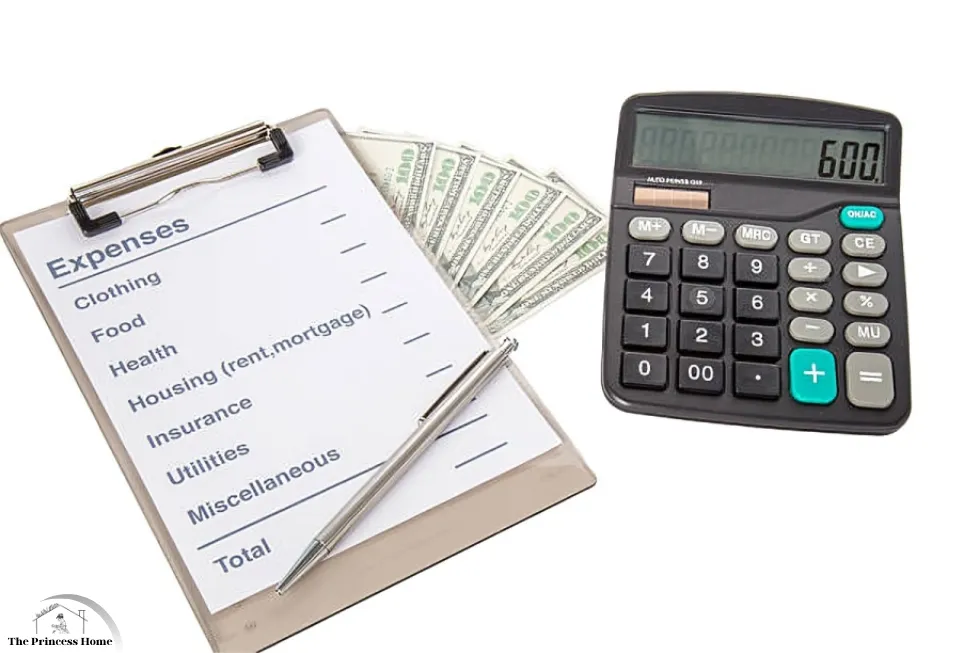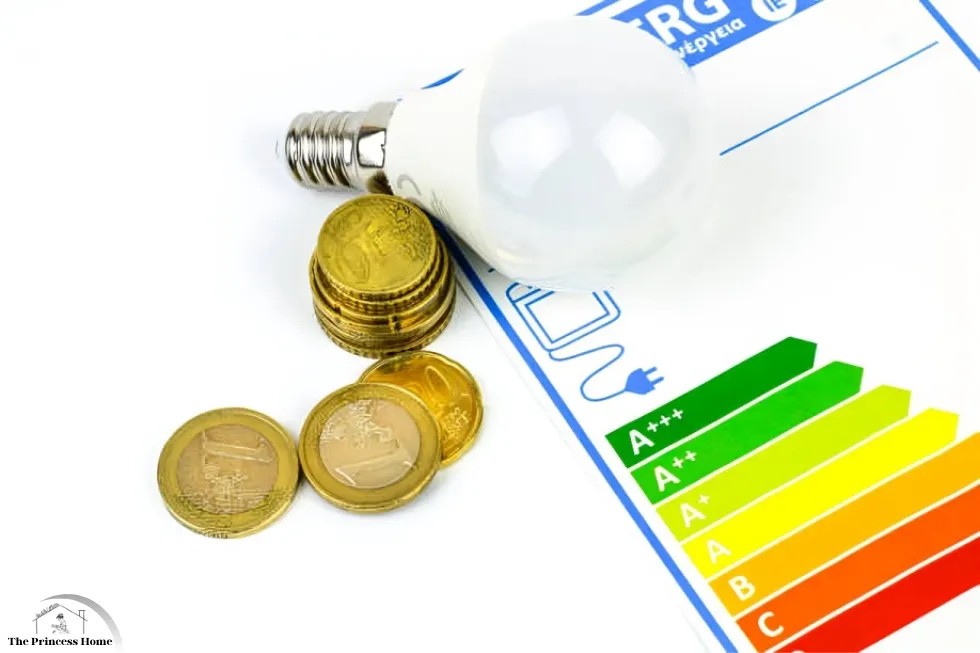
Household Expenses: Managing household expenses can often feel like a daunting task, especially when it seems like your money disappears faster than you can earn it. However, with a bit of planning, discipline, and some smart strategies, you can effectively cut costs and save money without sacrificing your quality of life. In this comprehensive guide, we will explore various ways to save on household expenses, from budgeting and reducing energy costs to smart shopping and cutting unnecessary spending.

1.Create a Detailed Budget
The first step in saving on household expenses is to create a detailed budget. This will help you understand where your money is going and identify areas where you can cut costs. Start by listing all your sources of income and then track your monthly expenses. Categorize these expenses into fixed (rent/mortgage, utilities, insurance) and variable (groceries, entertainment, dining out) categories. Be honest about your spending habits and consider using budgeting apps or spreadsheets to help you monitor your financial inflow and outflow.

2.Reduce Energy Costs
Energy bills can be a significant portion of your monthly expenses. Implementing energy-saving strategies can help you lower these costs. Here are some tips:
a. Use energy-efficient appliances and lighting.
b. Seal gaps and insulate your home to prevent heat or cool air from escaping.
c. Turn off lights, electronics, and appliances when not in use.
d. Set your thermostat at an energy-efficient temperature.
e. Consider using a programmable thermostat to optimize heating and cooling.

3.Cut Your Grocery Bill
Food is another area where you can make substantial savings. Here’s how:
a. Plan your meals and create a shopping list to avoid impulse buying.
b. Buy in bulk for non-perishable items and freeze what you can.
c. Look for sales, discounts, and coupons.
d. Compare prices at different stores.
e. Consider generic or store brands, which are often cheaper.

4.Smart Shopping Habits
Developing smart shopping habits can help you save money on everyday purchases:
a. Avoid shopping when you’re hungry, tired, or stressed to make more rational choices.
b. Buy quality items that last longer, even if they cost a bit more upfront.
c. Use cash or debit cards instead of credit cards to prevent impulse purchases and accumulating debt.
d. Embrace the “wait before you buy” strategy to think over non-essential purchases.
e. Take advantage of cashback or rewards programs offered by credit cards or retailers.

5.Cut Unnecessary Expenses
Trimming your spending on non-essential items is another effective way to save on household expenses:
a. Cancel unused subscriptions and memberships.
b. Evaluate your cable or streaming services and consider downsizing or cutting them altogether.
c. Reduce dining out and opt for homemade meals.
d. Limit impulse purchases and focus on your long-term financial goals.

6.Find Alternatives for Transportation
Transportation expenses can add up, but there are ways to save in this area:
a. Use public transportation, carpool, or bike when possible to reduce fuel costs.
b. Consider downsizing to a more fuel-efficient vehicle.
c. Plan errands efficiently to reduce unnecessary trips.

7.Eliminate High-Interest Debt
High-interest debt, such as credit card debt, can eat into your budget. Focus on paying off these debts as quickly as possible to reduce the interest you’re paying. You can use the snowball or avalanche method to prioritize your debts and create a payoff plan.

8.Save on Housing Costs
If your housing expenses are a significant part of your budget, consider ways to reduce them:
a. Refinance your mortgage to get a lower interest rate.
b. Downsize to a smaller home or apartment if possible.
c. Rent out a spare room or your property on platforms like Airbnb.
9.Invest in Personal Finance Education
Investing in your financial literacy can be a great long-term strategy to save money. Understanding financial concepts, budgeting, and investing can help you make informed decisions that save you money and grow your wealth.
Creating a budget table that divides your expenses into daily, weekly, and monthly needs is a practical way to manage your finances. Here’s a sample budget table to help you get started:
| Category | Daily (D) / Weekly (W) / Monthly (M) | Estimated Amount |
|---|---|---|
| Housing | M | $1,200 |
| Utilities | M | $200 |
| Transportation | M | $250 |
| Groceries | W | $150 |
| Dining Out | W | $50 |
| Entertainment | W | $30 |
| Health Insurance | M | $150 |
| Personal Care | W | $20 |
| Savings/Investments | M | $300 |
| Debt Payments | M | $200 |
| Miscellaneous | D | $10 |
This table provides a breakdown of your expenses, categorizing them into daily, weekly, and monthly needs. Here’s how it works:
Category: List the expense categories, such as housing, utilities, transportation, groceries, etc.
Daily (D) / Weekly (W) / Monthly (M): Indicate the frequency of the expense. For example, housing is a monthly expense, groceries are a weekly expense, and miscellaneous expenses are daily.
Estimated Amount: Fill in the estimated amount you plan to spend in each category based on your budget. Be as realistic and accurate as possible.
By categorizing your expenses this way, you can better manage your finances, ensure you’re allocating enough money for essential needs, and have a clear overview of where your money is going. Adjust the estimated amounts as needed to align with your financial goals and priorities. Regularly tracking your actual spending against this budget will help you stay on top of your finances and make necessary adjustments.
Conclusion
Saving on household expenses is not about depriving yourself but making thoughtful, financially responsible choices. By creating a budget, reducing energy costs, cutting grocery bills, developing smart shopping habits, eliminating unnecessary expenses, finding transportation alternatives, paying off high-interest debt, and optimizing housing costs, you can significantly reduce your household expenses and work toward your financial goals. It takes commitment, discipline, and patience, but the rewards in terms of financial stability and peace of mind are well worth the effort. Remember, small changes can lead to significant savings over time.
Certainly! Here are some frequently asked questions related to saving on household expenses, along with their answers:
Q1: How can I create a budget if I’ve never done it before?
A1: Creating a budget is easier than you might think. Start by listing your sources of income and then track your monthly expenses. Categorize these expenses into fixed (like rent or mortgage) and variable (such as groceries and dining out). There are budgeting apps and templates available to help you get started.
Q2: What are some practical ways to cut energy costs in my home?
A2: To reduce energy costs, consider using energy-efficient appliances and lighting, sealing gaps and insulating your home, turning off lights and appliances when not in use, setting your thermostat at an energy-efficient temperature, and using a programmable thermostat to optimize heating and cooling.
Q3: How can I lower my grocery bill without sacrificing the quality of the food I buy?
A3: You can lower your grocery bill by planning your meals and creating a shopping list to avoid impulse buying, buying in bulk for non-perishable items and freezing what you can, looking for sales and discounts, comparing prices at different stores, and considering generic or store brands, which are often cheaper and offer good quality.
Q4: What are some smart shopping habits to save money when making everyday purchases?
A4: Smart shopping habits include avoiding shopping when you’re hungry, tired, or stressed, buying quality items that last longer, using cash or debit cards to prevent impulse purchases, and taking advantage of cashback or rewards programs offered by credit cards or retailers.
Q5: How can I eliminate high-interest debt to save on household expenses?
A5: To eliminate high-interest debt, prioritize paying off your debts using methods like the snowball or avalanche method. The snowball method focuses on paying off the smallest debts first, while the avalanche method tackles the debts with the highest interest rates. As you pay off debt, you free up more money to save or invest.
Q6: Can you suggest ways to save on housing costs without moving to a smaller home?
A6: If you want to save on housing costs without moving, consider refinancing your mortgage to get a lower interest rate, or rent out a spare room or your property on platforms like Airbnb. You can also explore home-sharing arrangements or co-living options.
Q7: What are some strategies to manage my daily, weekly, and monthly expenses effectively?
A7: To manage your daily, weekly, and monthly expenses effectively, create a budget as outlined in the article, use budgeting apps or tools to track your spending, and regularly review your finances to ensure you’re staying on track. Adjust your budget as needed to meet your financial goals.
By addressing these frequently asked questions, you’ll have a better understanding of how to save on household expenses and manage your budget effectively.








